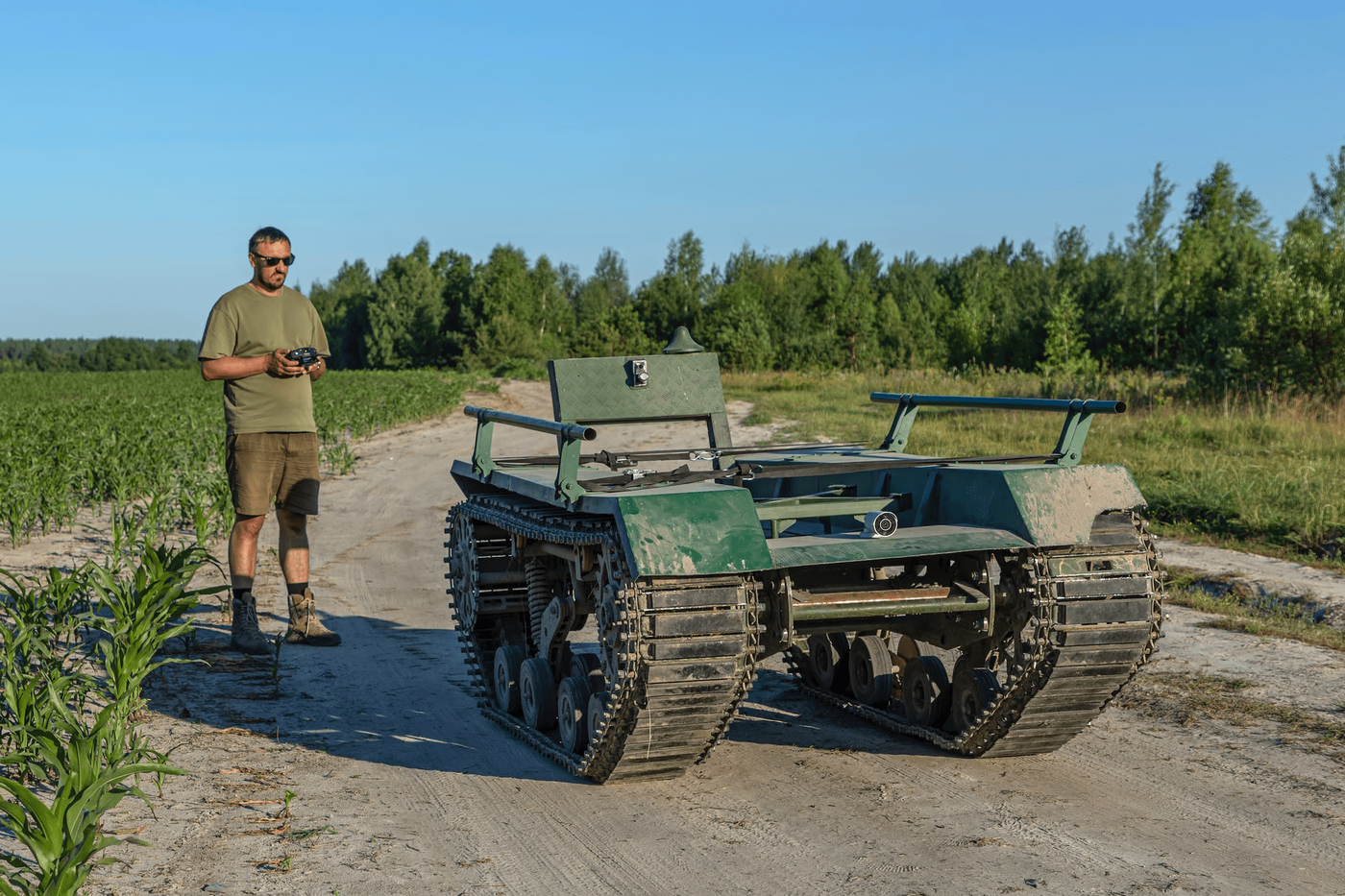Amid manpower shortages, overwhelming odds, and uneven international assistance, Ukraine seeks a strategic edge against Russia through innovation. In abandoned warehouses and factory basements, an ecosystem of secret laboratories is creating a robot army aimed at countering Russian forces and saving Ukrainian soldiers and civilians.
Rise of Defense Startups
Approximately 250 defense startups across Ukraine are developing these killing machines in secret locations that often resemble rural car repair shops. One such startup, led by entrepreneur Andrii Denysenko, assembles unmanned ground vehicles called the Odyssey. These vehicles can be built in just four days at a cost of $35,000, roughly 10% of the price of an imported model.
Denysenko has requested that specific details about the location remain undisclosed to protect the infrastructure and personnel.
Innovative Production Methods
The production sites are divided into small rooms for welding and bodywork, including fiberglass cargo beds, spray-painting, and fitting basic electronics, battery-powered engines, off-the-shelf cameras, and thermal sensors. The military is evaluating various unmanned air, ground, and marine vehicles produced by these startups, which use cost-effective production methods far removed from those of large Western defense companies.
In May, Ukraine established a fourth military branch, the Unmanned Systems Forces, joining the army, navy, and air force. Engineers draw inspiration from defense magazines and online videos to create affordable platforms, to which weapons or smart components can be added later.
War Through Innovation
“We are fighting a huge country with no resource limits. We understand that we cannot spend a lot of human lives,” said Denysenko, head of the defense startup UkrPrototyp. “War is mathematics.”
The Odyssey drone, a car-sized, turretless tank on tracks, can travel up to 30 kilometers (18.5 miles) on a single battery charge. This 800-kilogram (1,750-pound) prototype serves as a rescue-and-supply platform but can be modified to carry a remotely operated heavy machine gun or mine-clearing charges.
Autonomous Systems on the Battlefield
The government fundraising page for Ukraine's Unmanned Systems Forces highlights the roles of these robots as logistics devices, tow trucks, minelayers, deminers, and self-destructive units. “The first robots are already proving their effectiveness on the battlefield," the page noted.
Mykhailo Fedorov, Deputy Prime Minister for Digital Transformation, is urging citizens to take free online courses and assemble aerial drones at home, aiming to produce a million flying machines annually. “There will be more of them soon. Many more,” he stated on the fundraising page.
Future Projects and Ethical Concerns
Denysenko’s company is also developing a motorized exoskeleton to boost soldiers’ strength and carrier vehicles to transport equipment and assist on inclines. “We will do everything to make unmanned technologies develop even faster. (Russia’s) murderers use their soldiers as cannon fodder, while we lose our best people,” Fedorov wrote online.
Ukraine's semi-autonomous attack drones and AI-endowed counter-drone weapons are causing concern among experts, who fear that low-cost drones will enable their widespread use. Technology leaders and international organizations are calling for a ban on autonomous weapons, arguing that they could lower the barrier to killing and escalate conflicts.
“Cheaper drones will enable their proliferation,” said Toby Walsh, professor of artificial intelligence at the University of New South Wales in Sydney, Australia. "Their autonomy is also only likely to increase."
















